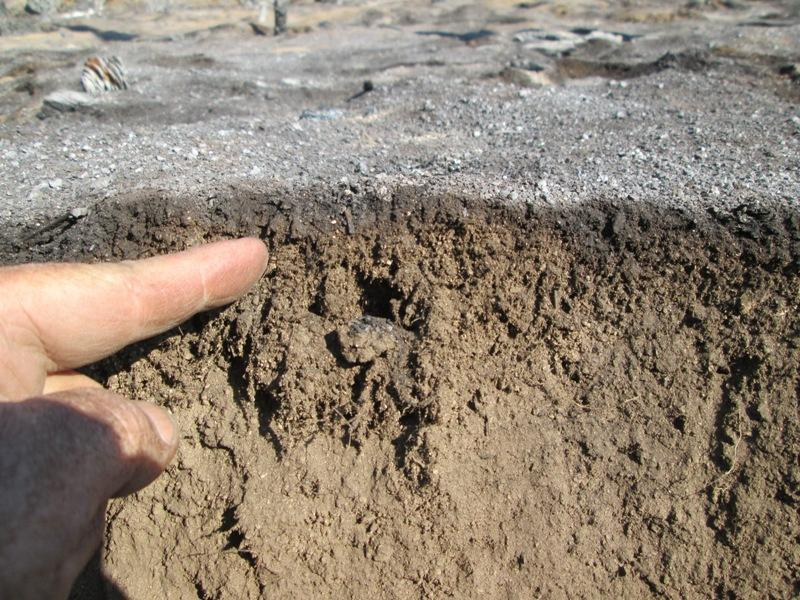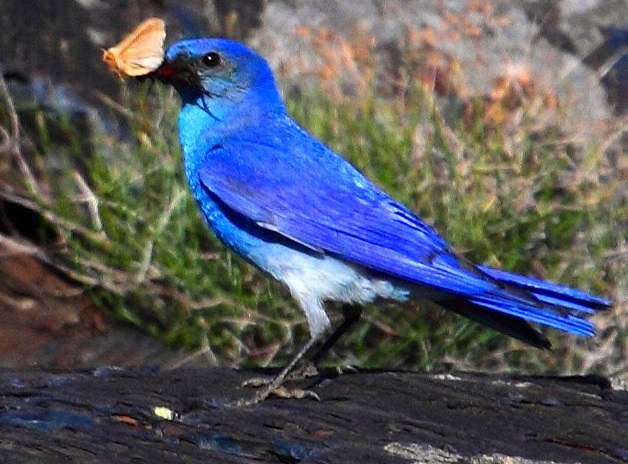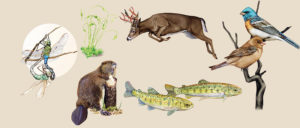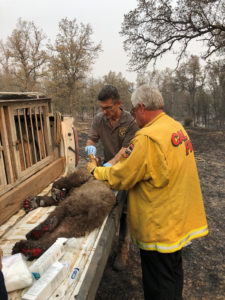As California’s fire season comes to a close, the fires that burned hundreds of thousands of acres in Yosemite and three thousand acres on Mount Diablo have left a landscape of burned trees, logs and soil. What to do next with that land, particularly in Yosemite, is a complicated decision, and politicians, land use managers, and ecologists have widely divergent goals.
One part of the Yosemite debate began in Congress with a bill known as the Yosemite Rim Fire Emergency Salvage, which was introduced in the House of Representatives in late September by California Republican Tom McClintock. The act would allow salvageable timber left in areas burned by the Rim Fire to be logged and sold. These “salvage timber sales” would be considered part of the restoration activities within burned areas of Yosemite National Park, Stanislaus National Forest, and Bureau of Land Management lands.
Rob York, a research stations manager and forestry professor at UC Berkeley, said salvaging fire-killed trees and then replanting the land can lead to forest dominance and reduce the risk of conversion to shrubs.
“California will continue to have an insatiable demand for lumber,” York said. “Getting it locally in a responsible manner is arguably wiser than importing it from Canada, Oregon, and Washington where rules that guide harvesting are not as strict.”

For all the attention paid to the trees, York suggested the most important aspect of responsible post-fire management is to pay careful attention to the soil, where Sierra forests hold most of their nutrients. If salvaging operations accelerate erosion or soil loss, York said, critical nutrients required for forest regeneration will be lost.
While there’s monetary value to logging burned areas, scientists point out that there’s also considerable ecological value to leaving them alone. Chad Hanson, a fire ecologist and director of the John Muir Project, a forest research and conservation organization, suggested that it is more ecologically sound to leave the dead trees.
In a report called “The Myth of ‘Catastrophic’ Wildfire: A New Ecological Paradigm of Forest Health,” Hanson synthesizes evidence that “snag forest” habitat resulting from fires, can have native plant and wildlife biodiversity and abundance equal to or greater than unburned, old-growth conifer forests of the Sierra Nevada – although, he said, snag forests are rare.
Snag refers to standing dead trees often missing many branches. Most park-goers will recollect images of these spire trees with sun-bleached (or fire-charred) bark and bore-hole ridden innards.
The Sierra Nevada black-backed woodpecker relies heavily on snag trees. Due to habitat loss consistent with fire suppression, post-fire salvaging, and fuel reduction management, the woodpecker has recently been proposed for endangered species listing by the U.S. Fish and Wildlife Service.
The black-blacked woodpecker is only one of many species that rely on habitat threatened by logging and fire management. When fire runs across the landscape and transforms the outer bark of trees into soil nutrients, an unprecedented growth pulse occurs the following spring. The scorched canopy now lies in ashes atop the soil and herbaceous vegetation has a renewed chance of flourishing.
If the topsoil is left undisturbed, carpets of herbs sprout and cover the forest floor. Rabbits and other small mammals nibble on the grasses, insects collect the nectar of the wildflowers, and insect larvae emerge within snags. Re-invading predators enjoy a feeding frenzy courtesy of the snag buffet: woodpeckers gorge on bark beetle larvae, and goshawks and spotted owls on herbivorous rabbits.
While there’s post-fire debate over what to do with dead trees in the Sierra, Mount Diablo State Park (MDSP) is looking at its own tree issues after the Morgan Fire.
The rejuvenation of the oak savanna habitat in Mount Diablo, as with the Sierra forests, depends on limiting soil nutrient loss. Because the Morgan Fire burned cooler than the Rim Fire, the topsoil wasn’t sterilized and so the land is expected to make a fast recovery.
MDSP Supervising Ranger Dan Stefanisko said the state park used trees felled in fire breaks to re-contour the land, restoring the natural flow of water down slopes and preventing ditch-like water accumulation on the mountain.
Though many may walk the charred hillsides of Mount Diablo State Park in awe of the afflicted landscape, Cyndy Shafer, a senior environmental scientist with California State Parks, said she appreciates the hidden gems.
“I may not see all of the recovery and benefits of this fire in my career, but I’m fine with that because nature works in its own timeline,” Shafer said. “I think the burned landscape is hauntingly beautiful, and a testament to the dynamic nature and resilience of our wildlands.”
Emily Moskal is a Bay Nature editorial intern.





